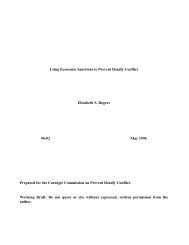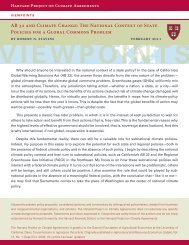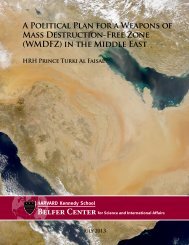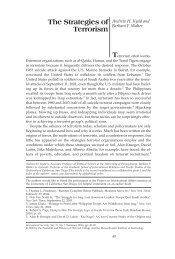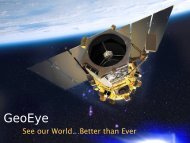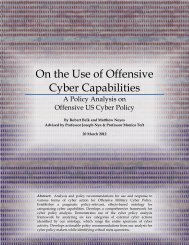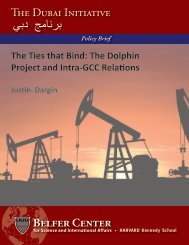Plutonium Mountain - Belfer Center for Science and International ...
Plutonium Mountain - Belfer Center for Science and International ...
Plutonium Mountain - Belfer Center for Science and International ...
- No tags were found...
Create successful ePaper yourself
Turn your PDF publications into a flip-book with our unique Google optimized e-Paper software.
The <strong>Mountain</strong> <strong>and</strong> its Legacy<br />
The town once known as Semipalatinsk-21 is an isolated, misbegotten city built at great human<br />
cost on the steppes of eastern Kazakhstan by prisoners between 1947-1949 <strong>for</strong> the purpose of<br />
providing a staging ground <strong>for</strong> Soviet nuclear weapons testing. 4 In the post-Soviet vacuum of the<br />
early 1990s, the conditions at Semipalatinsk-21 resembled the apocalypse that nuclear weapons<br />
have long portended. A city of 40,000 that was once serviced by two daily direct flights from<br />
Moscow had been trans<strong>for</strong>med into a dystopia of a few thous<strong>and</strong> stragglers <strong>and</strong> feral dogs whose<br />
main challenge was finding food <strong>and</strong> warmth. 5 Many regions of the <strong>for</strong>mer Soviet Union were<br />
impoverished in the first years after the collapse; this one was so poor <strong>and</strong> lawless that people<br />
who lived there resorted to scavenging the nuclear testing infrastructure. Even the highest-ranking<br />
officials were desperate. The Russian director of Semipalatinsk-21 was dismissed in 1993 on<br />
charges of selling equipment from the site’s facilities. 6<br />
From 1949 to 1961, the Soviet Union had turned the area around Semipalatinsk-21 into the<br />
equivalent of a nuclear battlefield, detonating 116 nuclear blasts in the atmosphere. 7 The last<br />
Soviet air test was in December, 1962. Following a global outcry over the ecological <strong>and</strong> health<br />
effects of atmospheric testing, the Soviets moved the testing program underground, where they<br />
conducted 340 underground explosions. The United States had conducted atmospheric testing in<br />
Nevada, <strong>and</strong> primarily in the Pacific. The United States similarly shifted to underground testing<br />
in this period, <strong>and</strong> ceased atmospheric testing in 1963 upon entering into a limited test ban treaty<br />
with the Soviet Union.<br />
At Semipalatinsk, a sprawling<br />
network of tunnels built under<br />
a series of hills near Semipalatinsk-21<br />
known locally as<br />
Degelen <strong>Mountain</strong> became a<br />
central location <strong>for</strong> the underground<br />
testing program. A<br />
ragged mound of granite, Degelen<br />
<strong>Mountain</strong> rises from the<br />
prairie grass of the steppes like<br />
the crested back of a half-submerged,<br />
prehistoric beast. To<br />
many local Kazakhs, the tests<br />
imbued it with a sinister air.<br />
Source: Carl Willis “Out there,” one senior Kazakh<br />
Ab<strong>and</strong>oned building in <strong>Center</strong> of Kurchatov City, 2012.<br />
scientist once told a reporter,<br />
4<br />
After Kazakhstan’s independence, the city was renamed Kurchatov City.<br />
5<br />
See: Russian Television Network, April 28, 1994, in JPRS-TND-94-012, “Reduced Staffing Causes Problems at Semipalatinsk,”<br />
June 7, 1994, p. 34 <strong>and</strong> “Glowing, But Not With Health,” The Economist, July 25, 1998, pp. 3-4.<br />
6<br />
See: Izvestiya, “Semipalatinsk Chief Removed from Test Site,” December 28, 1993, in FBIS-USR-94-001, January 5, 1994, p.<br />
31.<br />
7<br />
Hecker, “Dealing with Kazakhstan’s Nuclear Legacy,” p. 16.<br />
4<br />
<strong>Plutonium</strong> <strong>Mountain</strong>: Inside the 17-year mission to secure a dangerous legacy of Soviet nuclear testing



